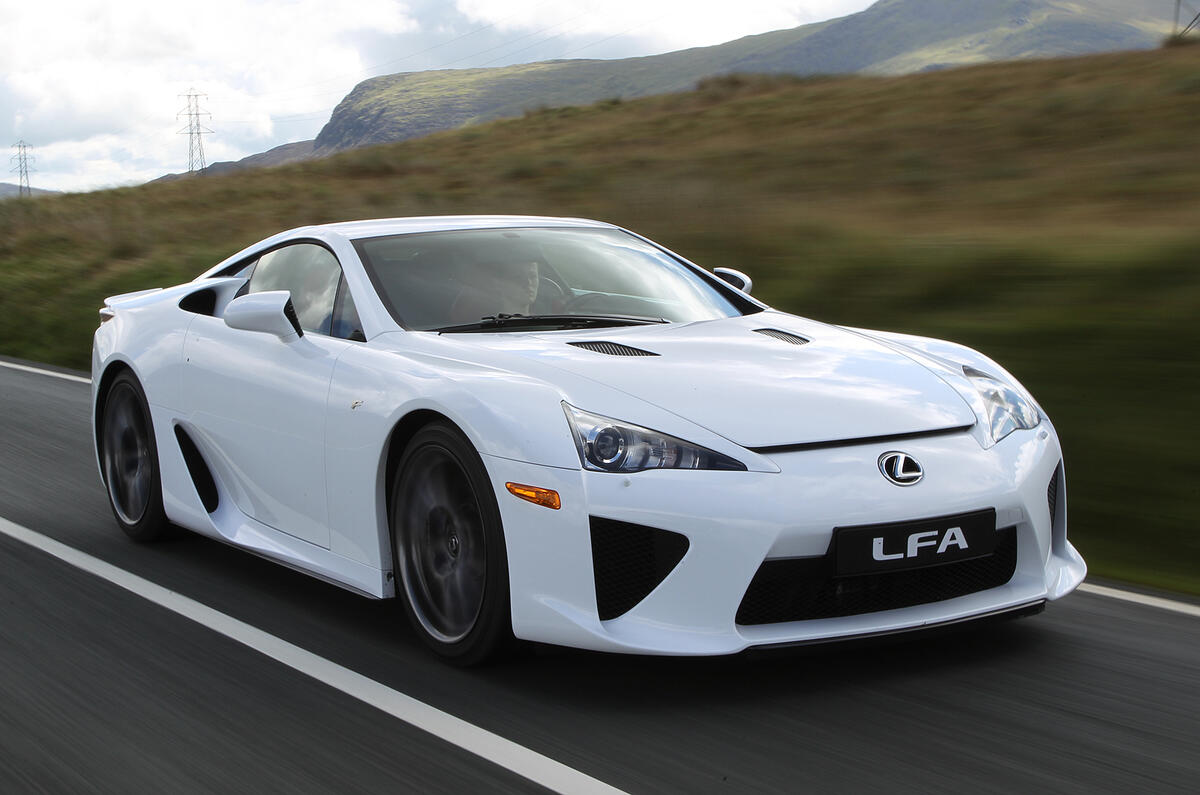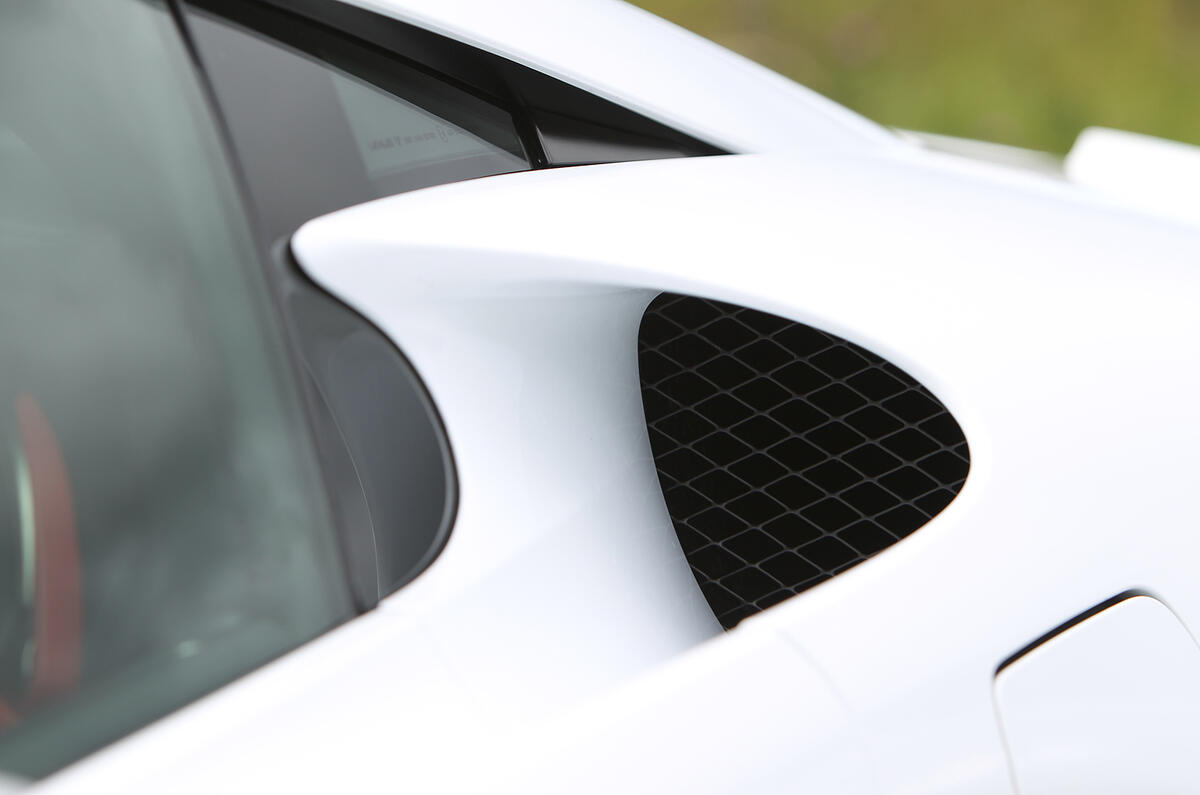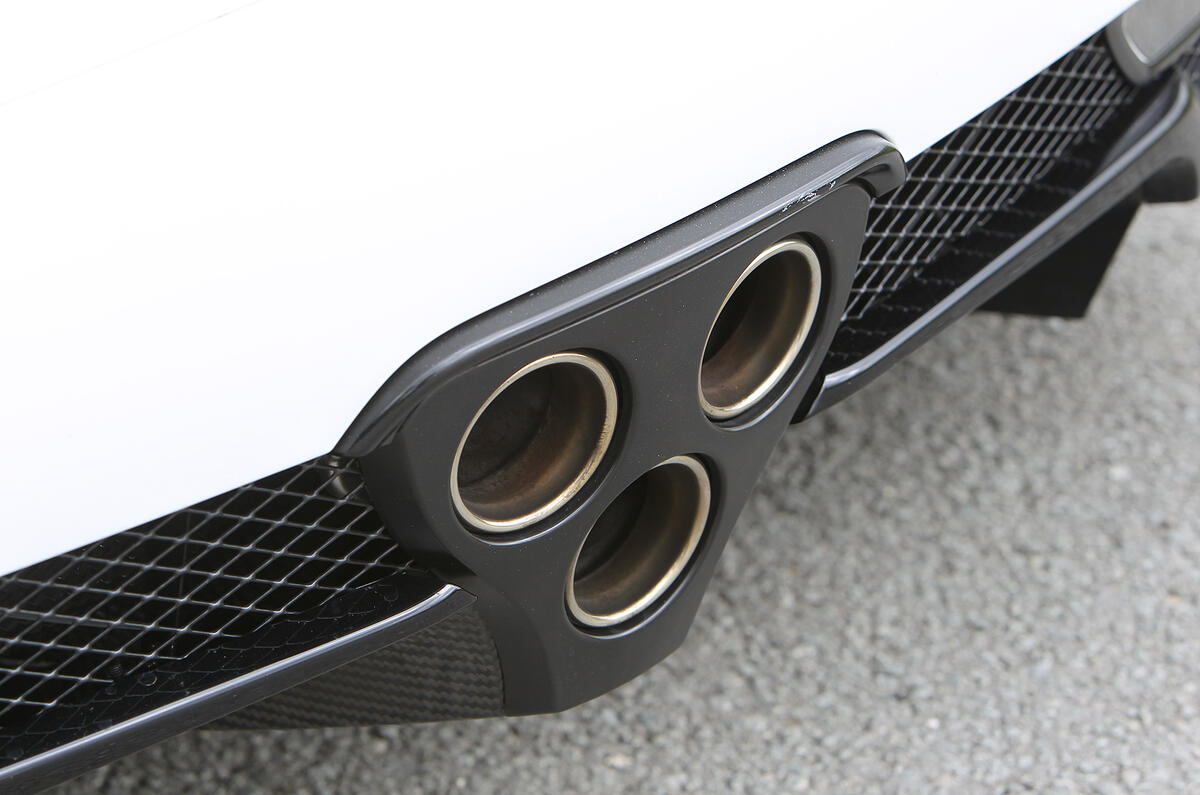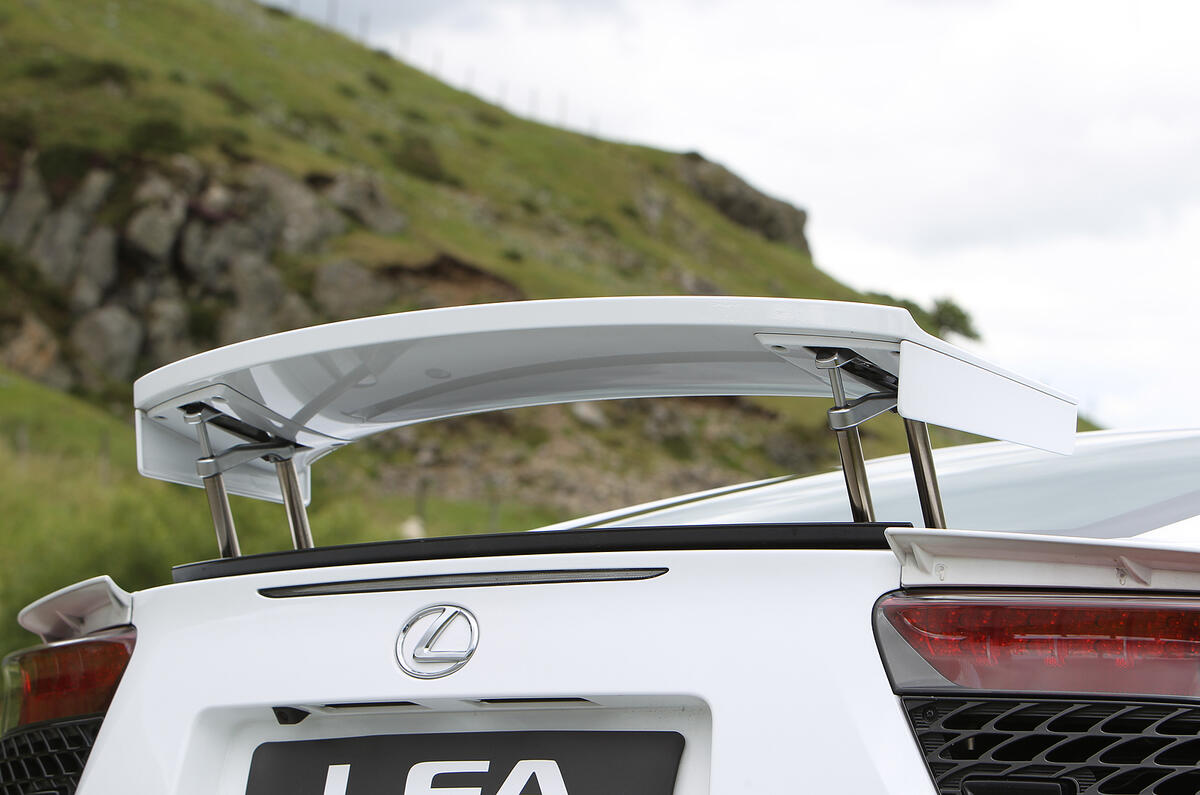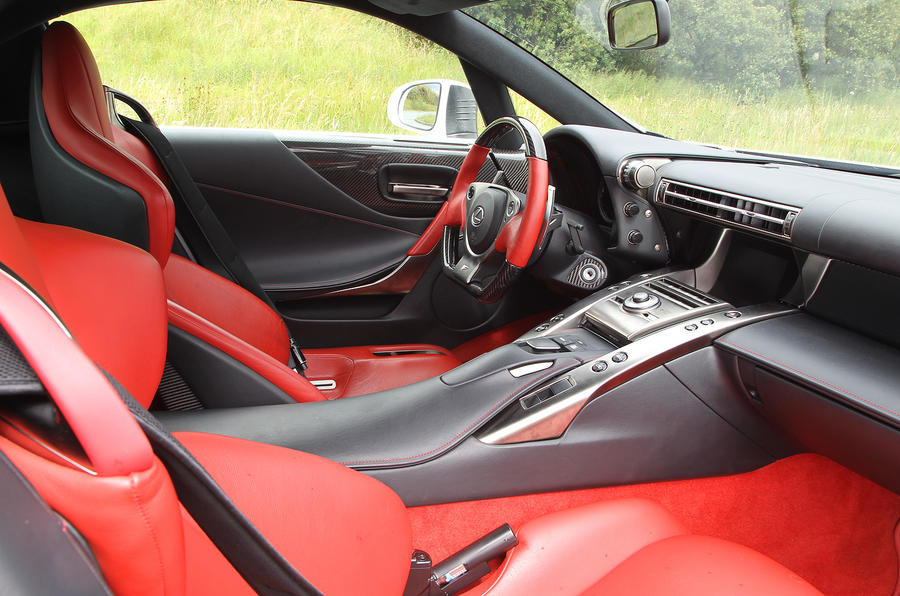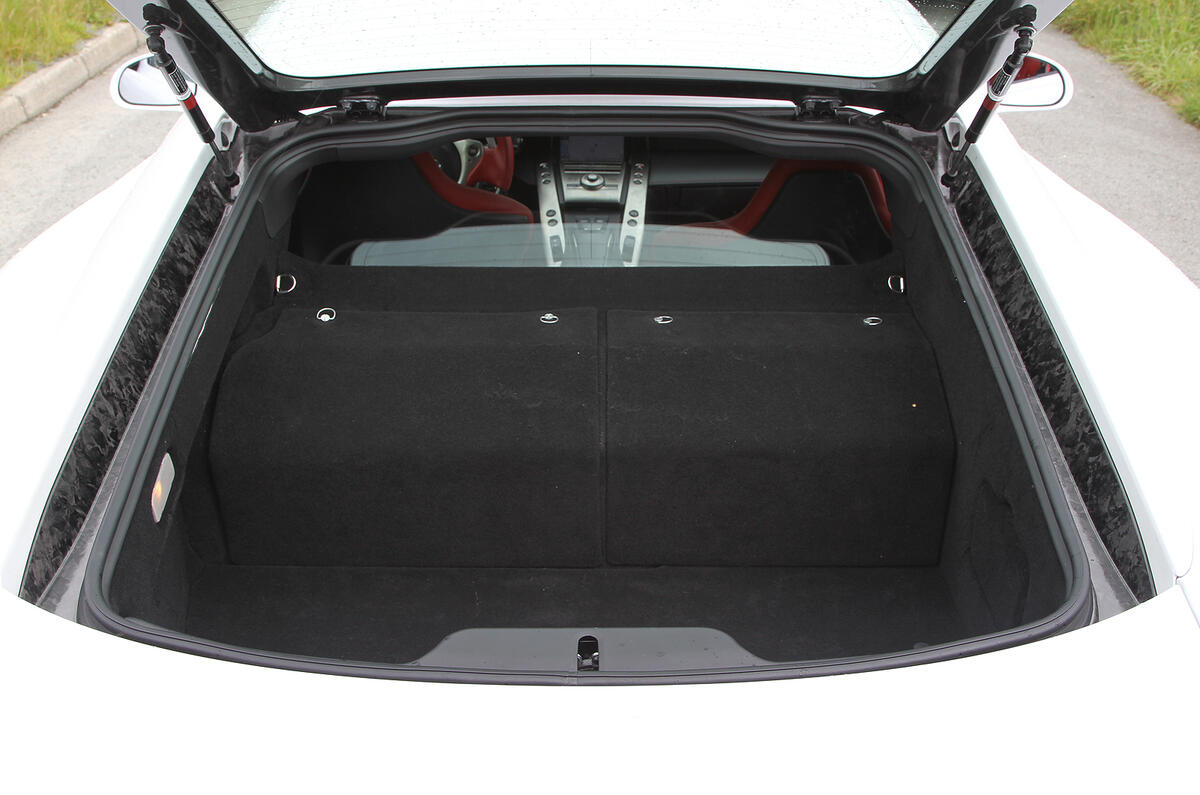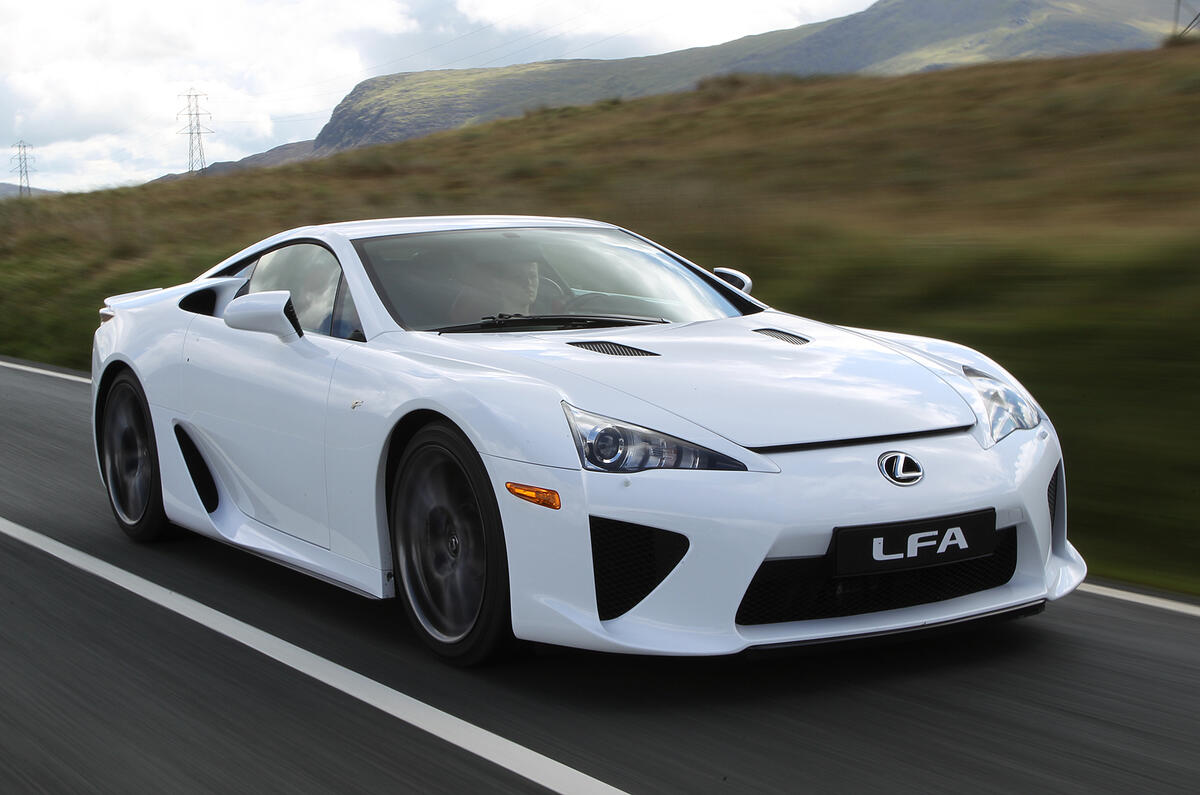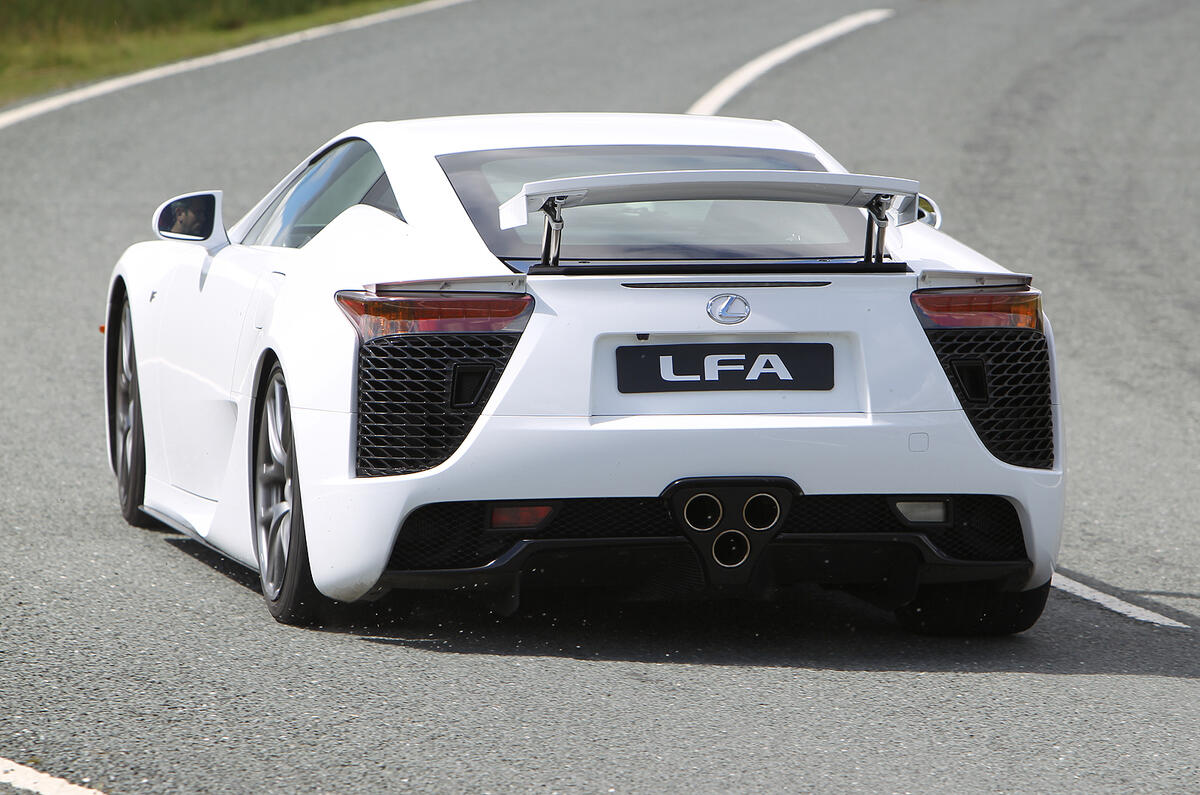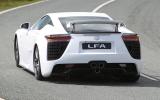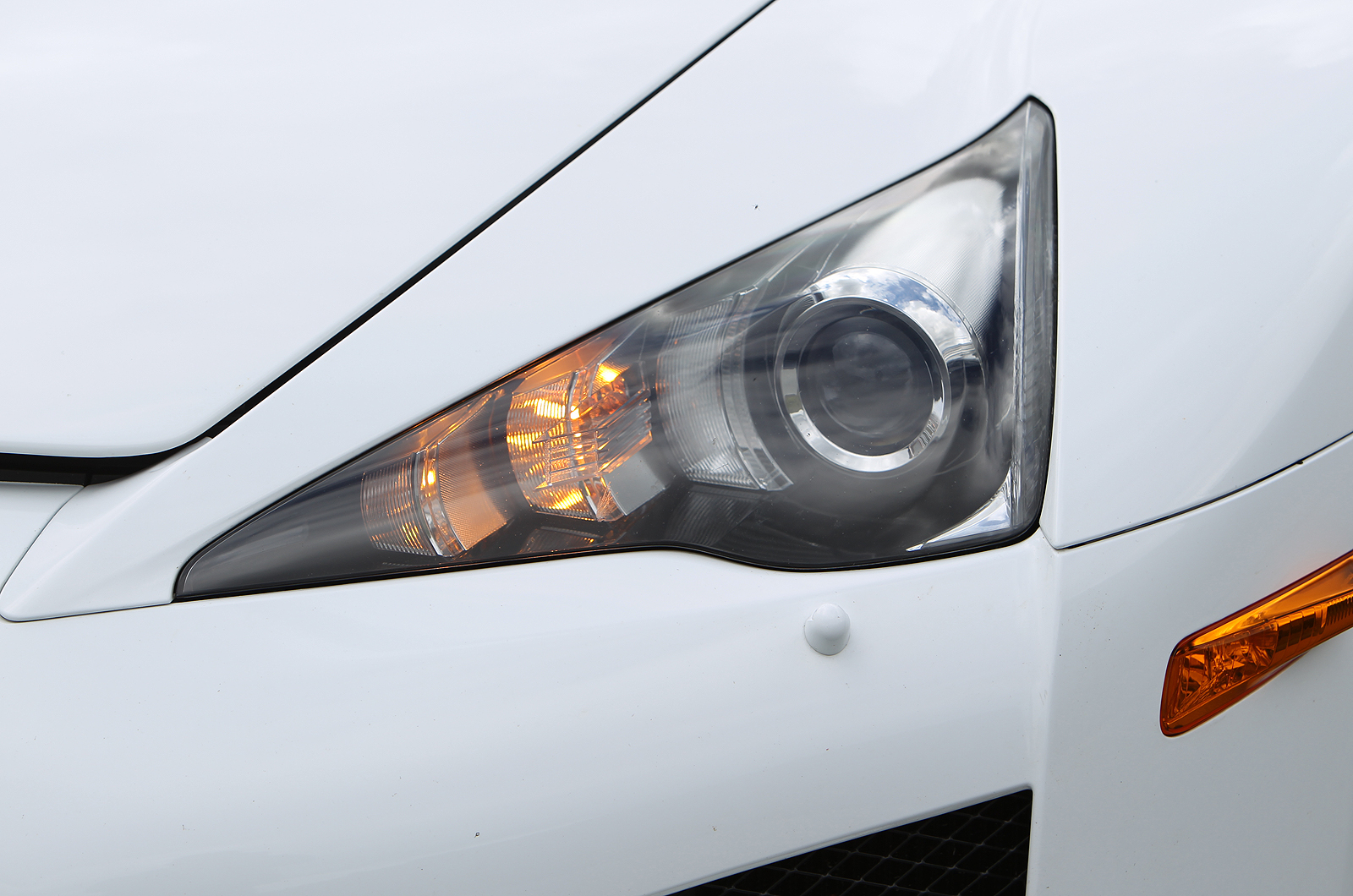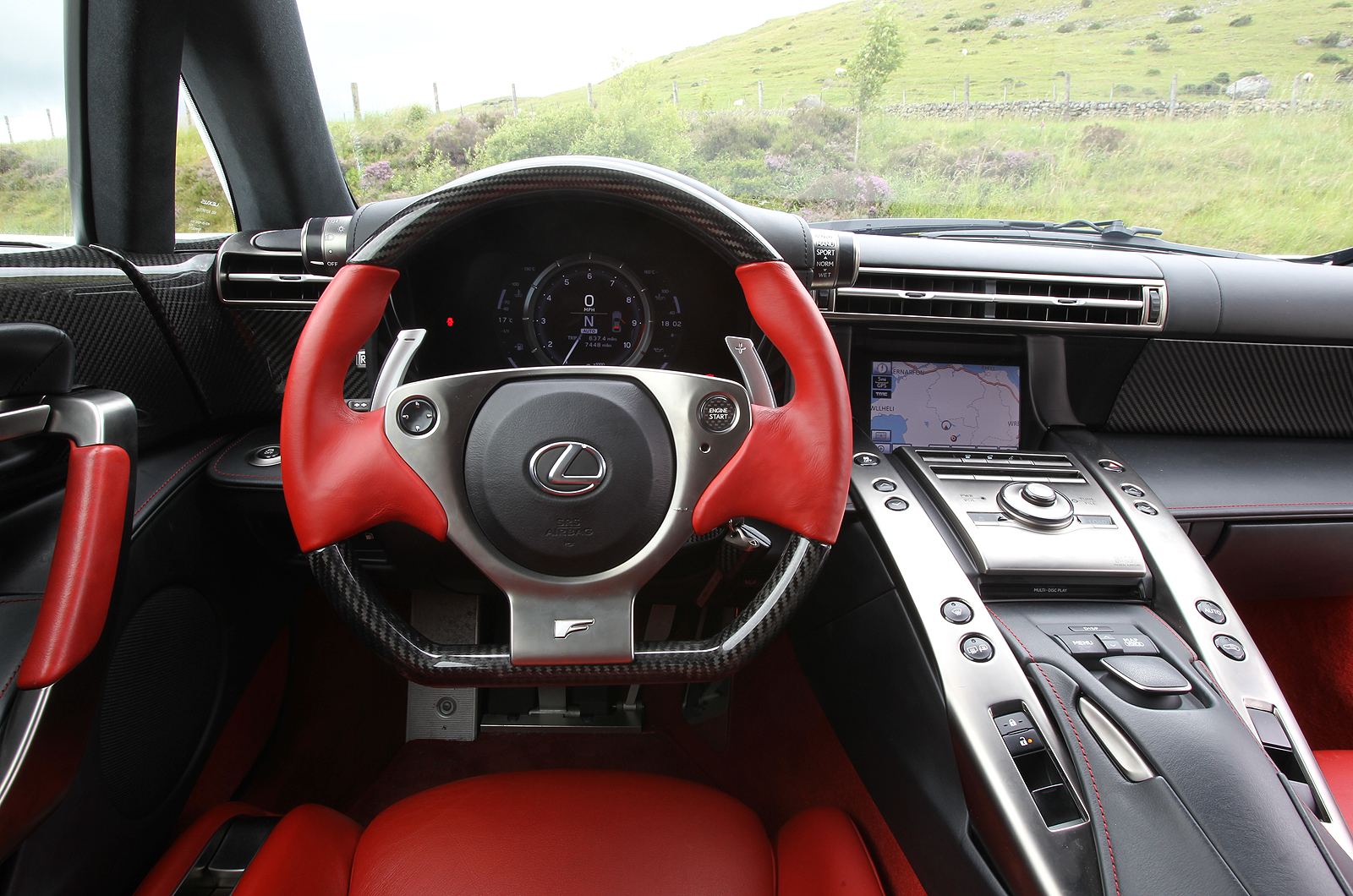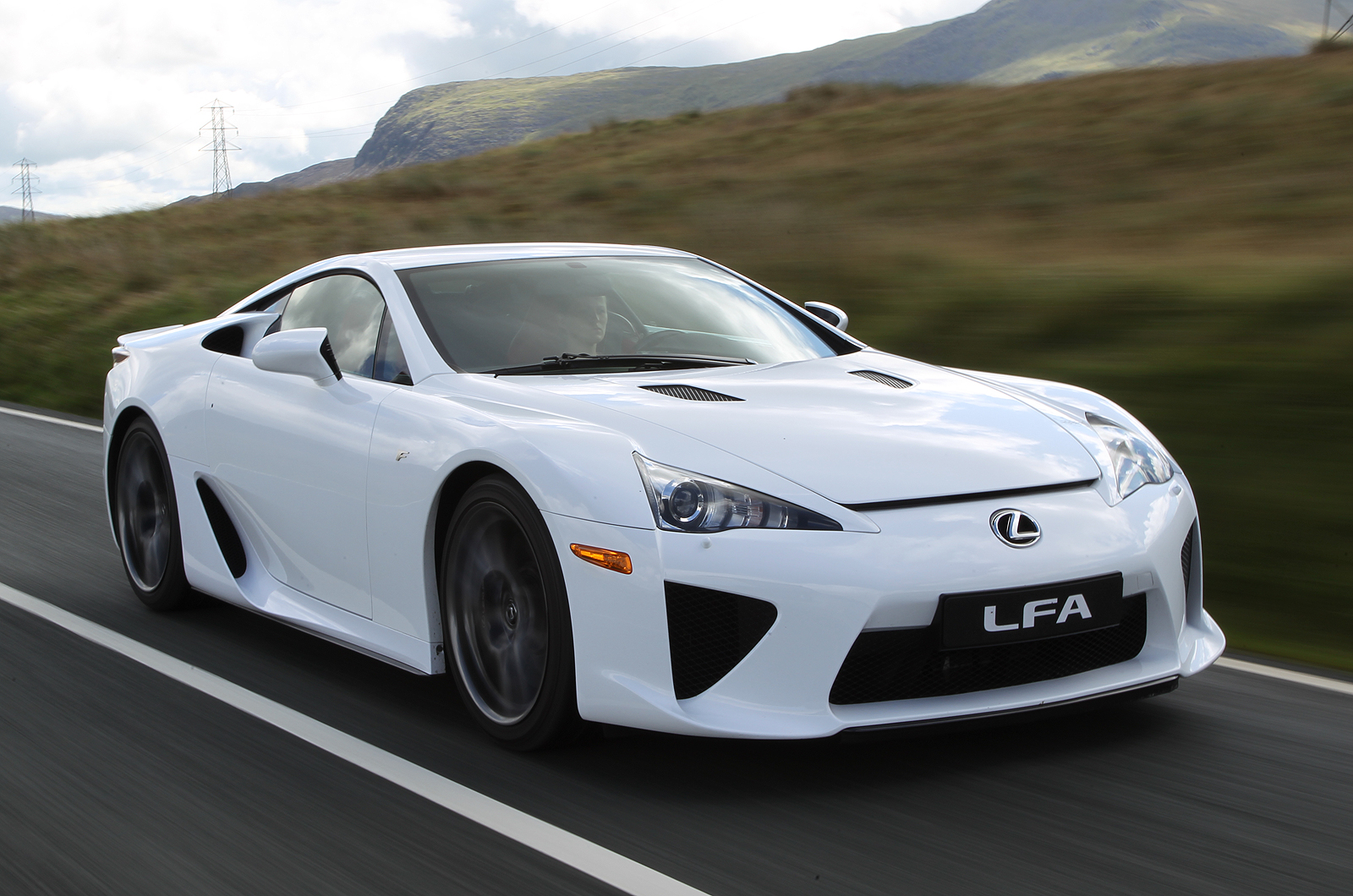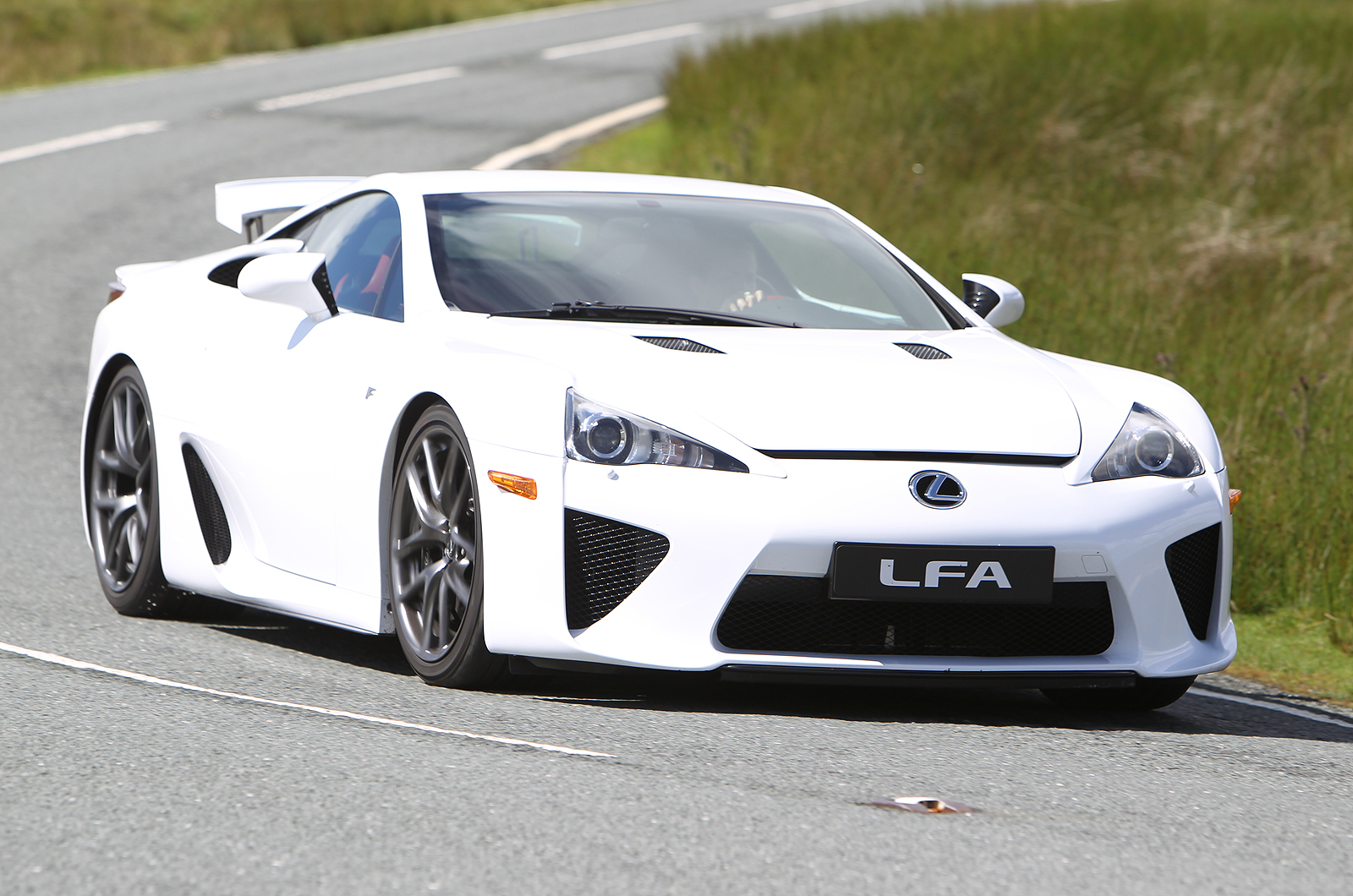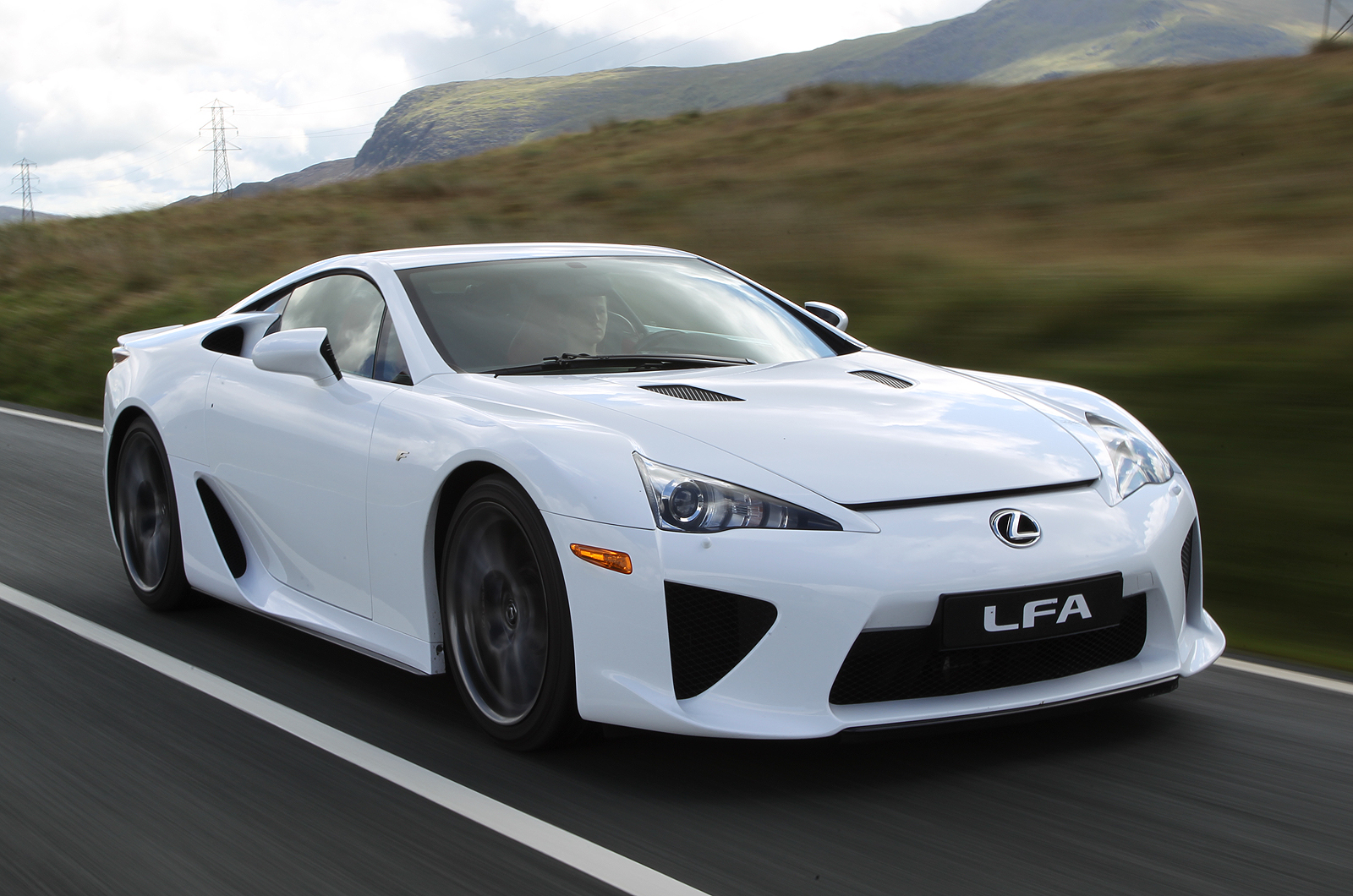The Lexus LFA started life in 2001 as no more than a study but, via the enthusiasm of its engineers and Toyota’s commitment to R&D, it gained its own momentum. At first it was going to be aluminium, but Lexus opted for carbonfibre-reinforced plastic instead.
Then mules ran at the Nürburgring for well over five years, and prototypes competed in the 24-hour race there in 2008 and 2009. Three concepts were shown, including a roadster in 2008.
The production LFA made its debut at the Tokyo motor show. Lexus immediately set new standards for refinement when it launched its luxury LS saloon in 1989 and with the LFA it’s trying to rewrite the rulebook for supercars.
When Lexus (backed, of course, by Toyota) decides that it’s going to do something new, it doesn’t do things by half: the LFA is a limited-run, carbonfibre special, making the breadth of Lexus’s range quite extraordinary.
Lexus says it aimed for a weight distribution of 48 percent front and 52 percent rear. To this end, a 4.8-litre V10 is set as far back in the frontal engine bay as possible, with a torque tube to a rear transaxle housing the single-clutch robotised manual gearbox.
Within its skin, though, lies the real delight. Its body is carbonfibre composite (left naked beneath the bonnet and bootlid), as is the vast majority of the monocoque chassis beneath. The passenger cell is carbonfibre, as is most of the rear of the car, while 35 percent of the body-in-white is aluminium, including the engine frame and, sensibly, the impact structures to the front and rear, offering sacrificial protection to the carbonfibre tub.



